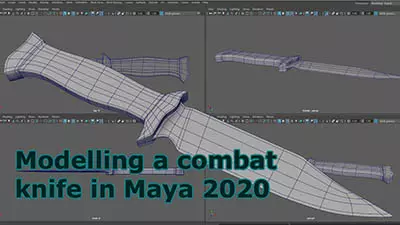Beer glass scene creation
This course contains a little bit of everything with modeling, UVing, texturing and dynamics in Maya, as well as compositing multilayered EXR's in Photoshop.
#
1
10-01-2003
, 01:01 AM
Registered User
Join Date: May 2002
Join Date: May 2002
Posts: 8
lot of tree
I have to build a scene in a forest
but with all the trees the scene is very heavy and it crash my PC
even if the trees are in a non visible layer
can i use a " dummy " which will be a simple polygon who will launch a model in render ?
PS : excuse me for poor english!!
#
2
10-01-2003
, 12:04 PM
https://www.rhonda.com/Maya_TopTen_02.html
Hopefully you understood all that.
#
3
10-01-2003
, 02:05 PM
In addition you could put each tree in it's own render layer (not display layer) and render in passes using image format that supports alpha channels (such as maya iff, tif or tga) and then composite the resulting images in photoshop or some real compositing package like after effects...
#
4
11-01-2003
, 08:58 AM
Registered User
Join Date: May 2002
Join Date: May 2002
Posts: 8
kbrown do you know where i can found a tutorial about low poly proxy objects
#
5
11-01-2003
, 10:26 AM
As for making renders work, one way (usually the best way) is to divide the trees into layers and render each layer separately, then composite. Another way is to use lower-res trees for those that are in the distance, or even replace faraway trees with a 2D image mapped onto a plane. If you're careful, you'll never be able to tell the difference and it will render much faster!!
-- Mark
Posting Rules Forum Rules
Similar Threads
Question about a paint effects tree
by BoondocksFan22 in forum Maya Basics & Newbie Lounge replies 5 on 11-08-2014
Question about a paint effects tree
by BoondocksFan22 in forum Maya Basics & Newbie Lounge replies 0 on 10-08-2014
Attaching items to a PaintFX Tree...
by Sierrus in forum Maya Materials & Textures replies 10 on 31-12-2003
How to modify a PaintFX tree using MEL
by Sierrus in forum Programming replies 0 on 30-12-2003
How to Make a Polygon Tree Sway in Wind....
by Sierrus in forum Dynamics & Special Effects replies 3 on 30-12-2003
Topics
Free Courses
Full Courses
VFX News
How computer animation was used 30 years ago to make a Roger Rabbit short
On 2022-07-18 14:30:13
Sneak peek at Houdini 19.5
On 2022-07-18 14:17:59
VFX Breakdown The Man Who Fell To Earth
On 2022-07-15 13:14:36
Resident Evil - Teaser Trailer
On 2022-05-13 13:52:25
New cloud modeling nodes for Bifrost
On 2022-05-02 20:24:13
MPC Showreel 2022
On 2022-04-13 16:02:13









